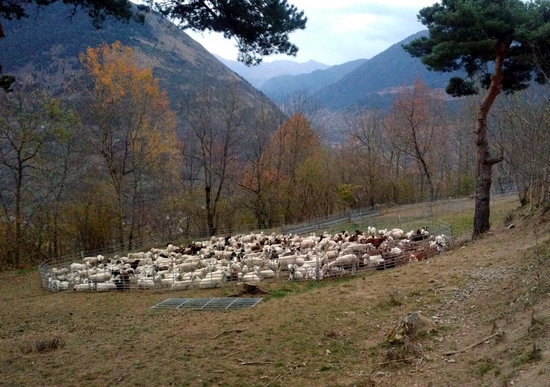Brown bear Goiat responsible for a third of livestock attacks in Pyrenees
Catalan government says animal will be removed and despite defends reintroduction program

Brown bears once roamed the Catalan Pyrenees, until hunters wiped them out in the 1980s. However, a successful reintroduction program means that 40 specimens of the bears once again inhabit the mountains.
Yet, some herders do not welcome the presence of the bears, as by August 31 the Catalan government says that a brown bear called Goiat was responsible for 12 attacks on livestock in the area.
With this part of the Pyrenees bordering France, Goiat is also responsible for 15 attacks on livestock across the frontier. These 27 attacks make up between 30 and 40% of all attacks on livestock, considered a "very high and anomalous predatory intensity."
In considering herders' complaints about Goiat, Catalan government figures show the bear is responsible for killing 22 sheep, almost all of them in France, a goat, and eight horses. It is an unusual situation although not without precedent.
The head of Environmental Policy, Ferran Miralles, on Friday appeared before the press to try to clarify the government's position towards criticism of the situation from both herders and ecologists.
New protocol being prepared
While Miralles confirmed that Goiat is responsible for more attacks than usual, wildlife experts in Catalonia, Aragon and Navarre are working together to come up with a joint protocol on how to react to cases such as this one.
The new protocol, predicted Miralles, will probably end up with the "extraction" of the animal from the area and Goiat will either be sent to an animal sanctuary, or more likely, he will be put down.
To do that, however, the bear must first be found. He is currently in France near the Garonne River, but as every year is expected to return in autumn to Val d'Aran. While the bear is wearing a GPS collar, the battery is on the point of running out.
Miralles also said that the government's intention is to continue its reintroduction program, and he pointed to Asturias and Cantabria, where there are 250 specimens without the same problems, which he attributed to herders being more familiar with the presence of bears.
Six safe zones for livestock
The environmental policy head also defended the government's management of the bear population, pointing out that there are six safe zones for livestock where they are watched 24 hours a day in the five-month period in which sheep are put to pasture there.
Miralles also wondered whether some herders preferred to suffer the damages to their livestock in order to receive compensation from the government for their loss. A large part of the budget for the area goes to compensating herders, the official added.